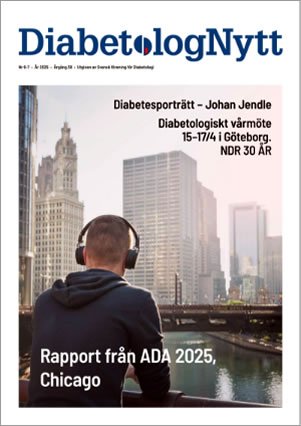Large observational study using real-world data finds no increased risk for hospitalized heart failure (hHF) among patients who initiated use of DPP-4 inhibitors, compared to other antihyperglycemics.
First study author Senwee Toh, ScD, of Harvard Medical School wrote, “In this large population-based cohort study, we did not observe an increased risk for hHF among new users of saxagliptin or sitagliptin compared with new users of pioglitazone, second-generation sulfonylureas, or long-acting insulin products.”
The study was motivated in part by several large postmarketing trials, which have reported conflicting results about the cardiovascular safety of dipeptidyl peptidase-4 (DPP-4) inhibitors. The SAVOR-TIMI 53 (Saxagliptin Assessment of Vascular Outcomes Recorded in Patients with Diabetes Mellitus–Thrombolysis in Myocardial Infarction 53) trial reported 27% increased incidence of hospitalized heart failure for saxagliptin users compared to placebo. The EXAMINE (Examination of Cardiovascular Outcomes with Alogliptin versus Standard of Care) trial found slightly higher numbers of hospitalizations for heart failure among alogliptin users compared to placebo, though the results were not statistically significant. And the TECOS (Trial Evaluating Cardiovascular Outcomes with Sitagliptin) found no significant difference in hospitalized heart failure for alogliptin or sitagliptin users, compared to placebo.
In the population-based retrospective cohort study, researchers used data from the U.S. Food and Drug (FDA) Administration’s Mini-Sentinel program, a pilot program being developed to help monitor the safety of FDA-regulated medical products. Researchers included adults with T2DM who initiated treatment with the two most commonly prescribed DPP-4 inhibitors, saxagliptin and sitagliptin, between 2006 and 2009, and compared these to pioglitazone, second generation sulfonylureas, or long-acting insulin.
The analysis included 78,553 saxagliptin users and 298,124 sitagliptin users, with an average follow-up of 7-9 months. Researchers used two sophisticated statistical techniques (disease risk score [DRS] stratification and 1:1 propensity score matching) to adjust for the following confounders: patient demographics, medical history, medication use, risk factors for hospitalized heart failure and other cardiovascular events, other antihyperglycemics, and health services utilization.
The authors discussed several reasons for the varying results between this study and SAVOR-TIMI. The study used data from patients in routine ambulatory setting, who were generally healthier than patients in the SAVOR-TIMI study. They were younger, less likely to have a past history of heart failure or myocardial infarction, and had lower baseline insulin use at baseline. The authors also noted the short average follow-up (less than one year), which may not have captured hospitalized heart failure associated with saxagliptin that took longer to develop. The median follow-up in SAVOR-TIMI was 2.1 years.
To examine the associations of hHF with saxagliptin and sitagliptin, this population-based, retrospective, new-user cohort study was conducted. Patients aged 18 years or older with type 2 diabetes who initiated therapy with saxagliptin, sitagliptin, pioglitazone, second-generation sulfonylureas, or long-acting insulin products from 2006 to 2013 were part of the study.
Results showed that 78,553 saxagliptin users and 298,124 sitagliptin users contributed an average of 7 to 9 months of follow-up data to 1 or more pairwise comparisons. The risk for hHF was not higher with DPP-4 inhibitors than with the other study drugs. The hazard ratios from the disease risk score (DRS)-stratified analyses were 0.83 (95% CI, 0.70 to 0.99) for saxagliptin versus sitagliptin, 0.63 (CI, 0.47 to 0.85) for saxagliptin versus pioglitazone, 0.69 (CI, 0.54 to 0.87) for saxagliptin versus sulfonylureas, and 0.61 (CI, 0.50 to 0.73) for saxagliptin versus insulin. The DRS-stratified hazard ratios were 0.74 (CI, 0.64 to 0.85) for sitagliptin versus pioglitazone, 0.86 (CI, 0.77 to 0.95) for sitagliptin versus sulfonylureas, and 0.71 (CI, 0.64 to 0.78) for sitagliptin versus insulin.
Results from the 1:1 propensity score-matched analyses were similar. Results were also similar in subgroups of patients with and without prior cardiovascular disease and in a subgroup defined by the 2 highest DRS deciles.
From the results, it was concluded that in this large cohort study, a higher risk for hHF was not observed in users of saxagliptin or sitagliptin compared with other selected antihyperglycemic agents.
Nevertheless, conflicting results between these postmarketing trials, at least two meta-analyses and past observational studies, lead the authors to conclude, “Additional investigations are needed to better understand the relation between DPP-4 inhibitors and hHF risk. Well-designed randomized trials with hHF as the main end point or observational studies that address the limitations of our study will help provide more definitive evidence on the topic.”
Practice Pearls:
- Large postmarketing trials, meta analyses, and observational studies conflict about whether DPP-4 inhibitors increase the risk of hospitalized heart failure.
- A large, observational study using real-world data suggests that new users of saxagliptin and sitagliptin do not have an increased risk of hospitalized heart failure, compared to pioglitazone, second-generation sulfonylureas, or long-acting insulin users.
- Further studies are needed to confirm these results, and shared electronic health records could help facilitate research in this area.
Toh S, et al. Risk for hospitalized heart failure among new users of saxagliptin, sitagliptin, and other antihyperglycemic drugs: a retrospective cohort study. Ann Intern Med. 2016 Apr 26
Scirica BM, et al; SAVOR-TIMI 53 Steering Committee and Investigators. Saxagliptin and cardiovascular outcomes in patients with type 2 diabetes mellitus. N Engl J Med. 2013;369:1317-1326.
Association Between Hospitalization for Heart Failure and Dipeptidyl Peptidase 4 Inhibitors in Patients With Type 2 Diabetes: An Observational Study.
Diabetes Care. 2016 Jan 6. pii: dc150764
From www.diabetesincontrol.com
Nyhetsinfo
www red DiabetologNytt

